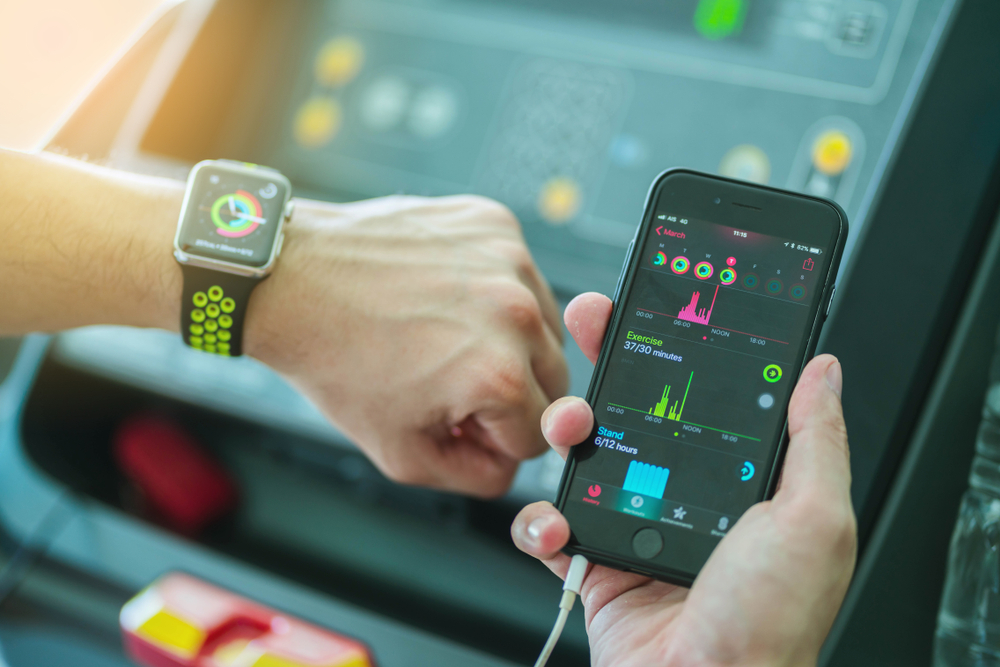During the past 50 years, technology has transformed and personalized many
ways to quantify aspects of human life. Nowhere today is this more evident than
in the field of medicine.
For years, devices have been available that let individuals engage in basic medical self-quantification, from taking temperatures and blood pressures to evaluating blood sugar levels and testing for pregnancy. Today, medical devices are evolving into configurations that will meet the globe’s fast-rising data-driven medical needs. Indeed, smartphone apps and add-ons are available that can perform basic ear, nose and throat exams, wearable patches exist for ongoing electrocardiograms (ECGs),1 and clothes made of smart fabrics can log vital signs and send them to the cloud.
Medical histories as well have become data points to be logged and maintained. Medical providers now type details about patient visits, exams, discussions, prescriptions and test results – all information points that once took up handwritten sheets of paper in bulky file folders – into record-keeping software which automatically appends the data to the patient’s file.
In the future, Watson-style cognitive computing capabilities with natural language interfaces and deep analytics2 might emerge as well that will guide physicians through patient assessments, diagnoses and treatments. All of this is important food for thought for insurers.
Individualization of Medicine
Genetics, smart phone technology and computing power are already rapidly transforming the practice of medicine.3 Many substantial changes to medicine are currently being driven by the expanded understanding of the human genetic code. Although errors in the human genetic code have long been known to cause certain impairments (e.g. Down syndrome, phenylketonuria), the successful sequencing of the human genome has greatly increased knowledge about physiological control mechanisms, enhanced the potential for reducing diagnostic time and expense and might usher in even more dramatic changes.
The past few year have seen a rapid drop in the cost and speed of sequencing. In the U.S., a full sequence now costs close to $1,000 and very basic sequencing for consumers from companies such as 23andMe is about 1/10th of that. (23andMe currently only offers ancestral origins analysis in the U.S., but in Canada, the U.K. and other countries, it offers genetically-determined health risk testing as well.)
The enhanced knowledge of the human genome is now also changing certain fundamental elements of the medical model. Rather than recommending a course of action proven most efficacious for the largest cohort, physicians can now, in certain circumstances, use a patient’s individual genome to individualize diagnosis, treatment, and monitoring. Knowing, for example, that a specific gene predicts a possible adverse reaction to certain treatments is highly relevant, as such reactions are a leading cause of death in hospitalized patients and are annually responsible
for hundreds of billions of dollars in added healthcare costs.4 As a practical example, by testing for liver enzymes CYP2D6, CYP2C9, and CYP2C1, physicians can identify patients who might have difficulties with certain common drugs that treat a variety of impairments, enabling adjustments to dosages or the selection of different alternatives.5
Wearable Devices and Ingestible Sensors6
For tracking biometrics, portable technology has evolved into wearable technology. Examples include more than just today’s near-ubiquitous fitness trackers. “Smart textiles” with embedded sensors now exist in a range of apparel choices. A t-shirt, for example, can be embedded with sensors that track a wearer’s vital signs, and a wireless insole has been developed that can measure distribution and motion parameters.7 Real-time location systems (RTLS) are increasingly being used around the world to tag and track individuals as well as equipment in hospitals and other healthcare settings.
More sophisticated biometric sensors, smaller cameras, and improvements to the interface technology required for humans and larger computing systems are already
in development. Sensors utilizing electro-active polymer technology exist that permit the measurement of muscle contractions and there are even biomedical “tattoos” –
epidermal electronic patches which can be temporarily affixed onto a patient’s body – that can monitor vital signs without the need for invasive procedures.8
Wearable items have become sufficiently commonplace to warrant attention from life and health insurers. If such devices are used for medical screening and possibly diagnostic purposes, they must be held to the highest standards regarding sensitivity, specificity, calibration, maintenance, data privacy, and encryption.
New technologies, however, are not limited to external wearables: ingestible sensors, also called “smart pills” (or smart pill systems), have also emerged. These systems, which have already been approved by the U.S. Food and Drug Administration, consist of a pill with an embedded sensor which, once swallowed, integrates with a dermal patch that receives the sensor’s signals and then connects to software that captures specific information.
The current focus in this area is on wireless patient monitoring to track biosigns and monitor prescription drug adherence, and diagnostic imaging.
The Coming of the Tricorder
The Qualcomm Tricorder XPRIZE, a competition recently launched to develop a medical device along the lines of the tricorder originally posited by the 1966 television series Star Trek, is of particular interest to life and health insurers. Star Trek tricorders came in two forms: a scientific tricorder, which analyzed planetary conditions and composition, and a medical tricorder, which assessed vital signs and made medical diagnoses.
The fundamental goal of the prize, which will award a total of $10 million to three winners, is the development of an all-in-one device that is smaller, faster, more connected and more effective than what currently exists. In the words of the entry materials, the device, which must weigh less than five pounds, should enable “reliable self-diagnosis or assessment” of 16 distinct conditions (13 “core” and a choice of three elective conditions) and five vital signs in a group of 15-30 people over the course of three days,9 and successfully upload the information to the cloud.
Winning devices must also be able to perform these assessments independently of a health care worker or facility, and in ways that provides “a compelling consumer experience.”
Such a device, if successfully developed and marketed, could fundamentally change how underwriting is done, especially if the range of impairments for which it can screen and diagnose expands. The average consumer could have a wealth of preliminary diagnostic information available before a physician visit. Insurers, also, would ideally have access to the data or be able to use similar devices in underwriting in order to maintain information symmetry and avoid anti-selective activity.
Underwriting Analysis
Along with all the challenges presented, the opportunities inherent in the increased quantification of the self should not be ignored. Consider, perhaps, a world in which every person’s genome has been fully mapped and where every home has medical devices to monitor and even diagnose minor as well as major illnesses. It is possible that in such a world, overall morbidity and mortality might improve.
- To share or not to share. As self-quantification becomes more common and less a fad, underwriters will focus more on how the information should be shared. Privacy regulations will address who has access to the information and for what purposes. Insurers and underwriters may need to adjust application questions and underwriting requirements.
- Personal medical device adoption is early in its evolution. It should not be assumed that all consumers will adopt such devices as soon as they are available. With smartphones, for example, the progression of adoption varied until a “tipping point” occurred.
- Personal medical devices are not currently considered diagnostic and have insurance risk. In the case of personal medical devices, most physicians today still require clinical verification of a result obtained from such as device. In addition, such information could allow for anti-selective activity.
- Sensitivity and specificity of the newest wearable/medical devices is lacking. The reliability of these medical devices is still in question, as research about levels of false positive and negative results has not yet been conducted. In medicine and in underwriting, the preferred approach to making changes in practice is based upon scientific studies followed by validation. Both of those steps take time. Until better data emerges about the accuracy and validity of test results from personal medical devices, a cautious view of these results need to be taken.
- Avoid media hyperbole and hype. The actual usefulness or risk threat of any new medical device should be analyzed critically. Focusing on published research, peer-reviewed articles, and patent applications will provide better guidance than secondary news sources that may simply be repeating assertions rather than data.
Into The Future
Underwriting and medical departments throughout the industry are faced with many challenges going forward – not the least of which is information overload. An insurer’s primary responsibility is fair assessment of risk with the goal of identifying higher-level risks without misidentifying the lower-level risks.
Insurance companies should remain vigilant and informed about innovations in the medical arena that may significantly impact how risk is assessed. It takes innovations time to mature and gain acceptance. As clients become quantified and quantifiable through new data sources and technologies, it falls to the insurance industry to understand what role that data will play in underwriting risk.



